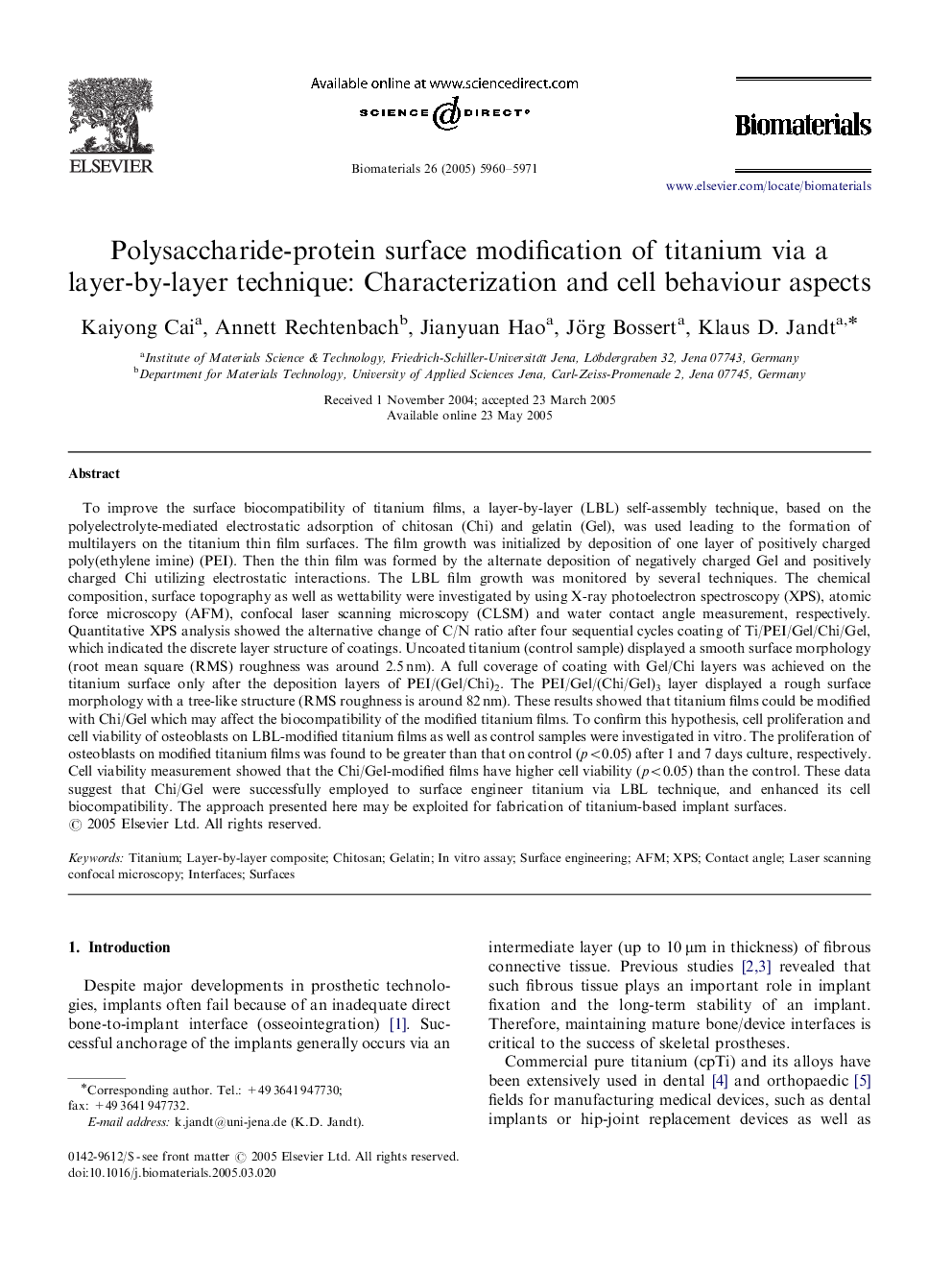| کد مقاله | کد نشریه | سال انتشار | مقاله انگلیسی | نسخه تمام متن |
|---|---|---|---|---|
| 12213 | 785 | 2005 | 12 صفحه PDF | دانلود رایگان |

To improve the surface biocompatibility of titanium films, a layer-by-layer (LBL) self-assembly technique, based on the polyelectrolyte-mediated electrostatic adsorption of chitosan (Chi) and gelatin (Gel), was used leading to the formation of multilayers on the titanium thin film surfaces. The film growth was initialized by deposition of one layer of positively charged poly(ethylene imine) (PEI). Then the thin film was formed by the alternate deposition of negatively charged Gel and positively charged Chi utilizing electrostatic interactions. The LBL film growth was monitored by several techniques. The chemical composition, surface topography as well as wettability were investigated by using X-ray photoelectron spectroscopy (XPS), atomic force microscopy (AFM), confocal laser scanning microscopy (CLSM) and water contact angle measurement, respectively. Quantitative XPS analysis showed the alternative change of C/N ratio after four sequential cycles coating of Ti/PEI/Gel/Chi/Gel, which indicated the discrete layer structure of coatings. Uncoated titanium (control sample) displayed a smooth surface morphology (root mean square (RMS) roughness was around 2.5 nm). A full coverage of coating with Gel/Chi layers was achieved on the titanium surface only after the deposition layers of PEI/(Gel/Chi)2. The PEI/Gel/(Chi/Gel)3 layer displayed a rough surface morphology with a tree-like structure (RMS roughness is around 82 nm). These results showed that titanium films could be modified with Chi/Gel which may affect the biocompatibility of the modified titanium films. To confirm this hypothesis, cell proliferation and cell viability of osteoblasts on LBL-modified titanium films as well as control samples were investigated in vitro. The proliferation of osteoblasts on modified titanium films was found to be greater than that on control (p<0.05p<0.05) after 1 and 7 days culture, respectively. Cell viability measurement showed that the Chi/Gel-modified films have higher cell viability (p<0.05p<0.05) than the control. These data suggest that Chi/Gel were successfully employed to surface engineer titanium via LBL technique, and enhanced its cell biocompatibility. The approach presented here may be exploited for fabrication of titanium-based implant surfaces.
Journal: Biomaterials - Volume 26, Issue 30, October 2005, Pages 5960–5971